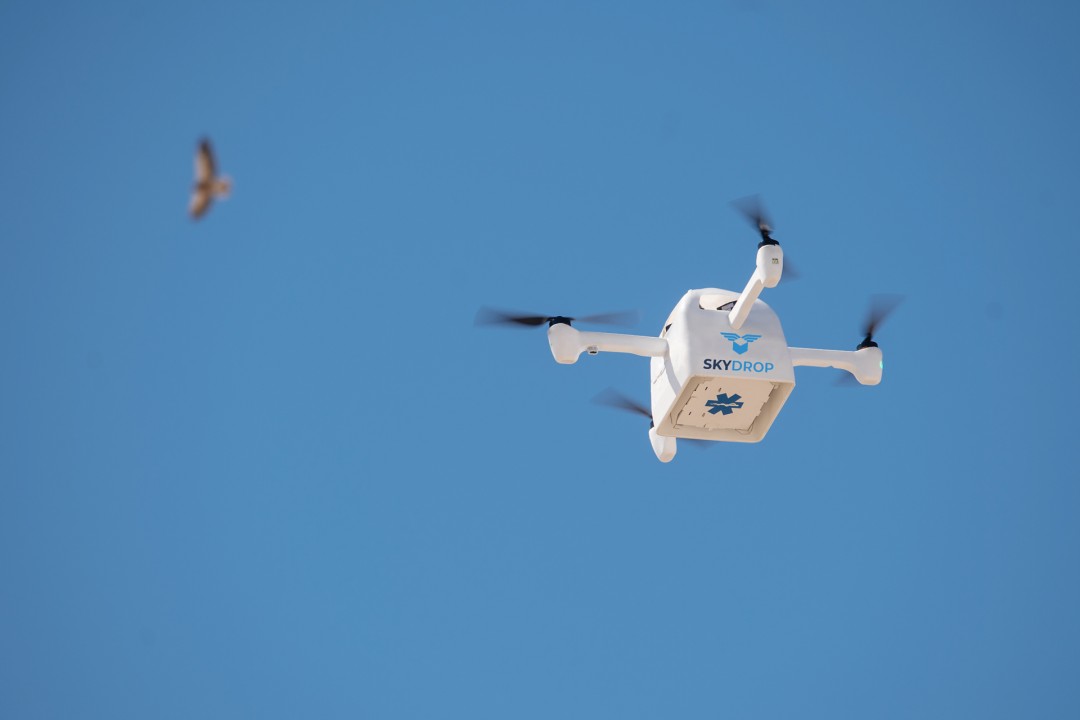
Though leaders like Zipline and Wing have generated most of the sector’s headlines in recent months, drone delivery pioneer SkyDrop has been quietly at work beneath the radar in continuing its seminal activities in the field. Today, however, the company announced its search for critical additional funding had come to an end, along with that its decade effort to develop specialized UAV transport hardware and systems.
Launched in 2014 as Flirtey, SkyDrop said on LinkedIn this morning that it had “filed Chapter 7 bankruptcy,” which unlike Chapter 11 usually means total cessation of activity and liquidation of the terminated company. As such, it marks a sad end to a ground-breaking, border-spanning firm that will nevertheless leave a permanent mark on drone delivery history.
Flirtey signaled its big ambitions in 2014, when it struck out from its domestic Australian market to the US, where it formed a partnership with the University of Nevada, Reno and the surrounding host city. In doing so, it initiated the creation of a funding, research, manufacturing, and testing ecosphere that many startups went on to replicate.
The next year, the company made the first ever Federal Aviation Administration-approved drone delivery flights in the US, transporting emergency medical payloads to a remote area clinic in Virginia.
Flirtey’s place in history was further secured when the F3.0 hexacopter used in that unprecedented drone delivery was placed in the Smithsonian Museum – but the company wasn’t finished there.
It continued developing its series of UAVs, fully integrated launching and landing systems, payload devices, and platforms for commercial and emergency medical uses in relative obscurity, while deep-pocketed sector firms like Wing and Amazon cut higher profiles.
But the renamed SkyDrop’s fortunes seemed to run opposite – at times literally – to those of bigger, richer rivals. Wing, for example, expanded its initial US drone delivery services to Flirtey’s homebase of Australia, which soon became its most successful market. Elsewhere, it continued developing its flying and navigation hardware backed by owner Alphabet’s billions, while SkyDrop had to generate new business to keep flying.
Its most recent coup in that effort was a double-barrel breakthrough in New Zealand, where it secured approval from the nation’s Civil Aviation Authority to operate UAV transport services in some of its major markets. Ahead of that, it signed a deal with Domino’s Pizza to provide drone deliveries across New Zealand
At the time – just seven months ago – SkyDrop trumpeted the accords as part of its continued effort in “redefining the trillion dollar last-mile food delivery market with a safer, speedier, quieter, cheaper, and greener solution,” using a UAV “built with NASA origins, (and which) has 6,000+ flights, 1,000+ patent claims, and is made in USA .”
But today the company says that on the same day it made its first deliveries under that drone authorization – July 24, 2023 – it “ran out of money and furloughed the team.” Since then, it has been negotiating with creditors and potential partners to raise more cash, including a proposal for “open-sourcing SkyDrop’s drone delivery kit in return for a potential long-term revenue stream.”
Alas, despite its “best efforts, we could not achieve a soft landing… (and) today, SkyDrop filed Chapter 7 bankruptcy,” the company said Monday. It linked a major part of its difficulties to FAA “regulations to enable commercial drone delivery at scale (that) continue to take much longer than anticipated,” stalling its US activities and revenues.
That lament to regulatory sluggishness now closes one of the most productive yet unsung stories in the ongoing and ascending drone delivery sector.
FTC: We use income earning auto affiliate links. More.



Comments